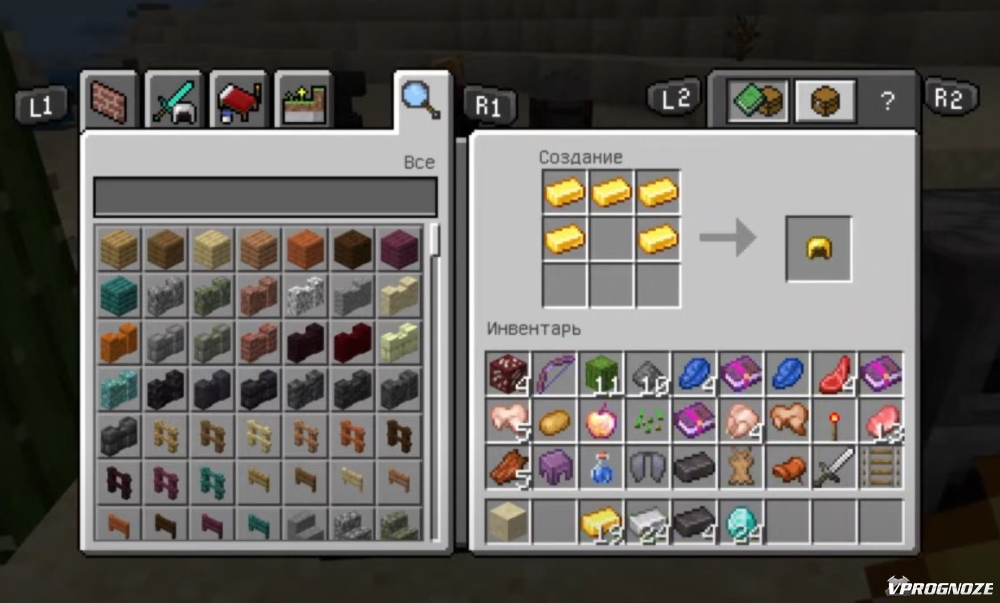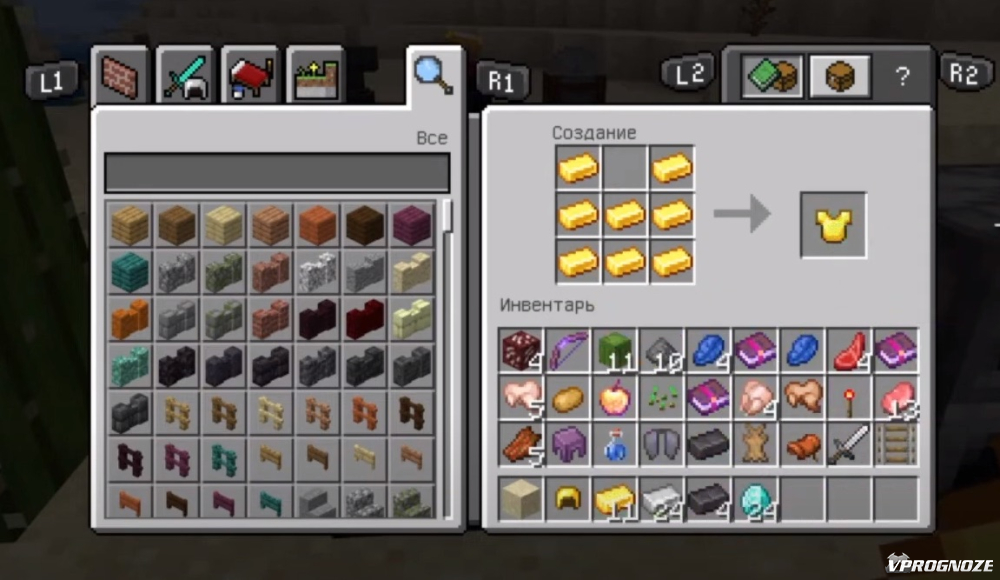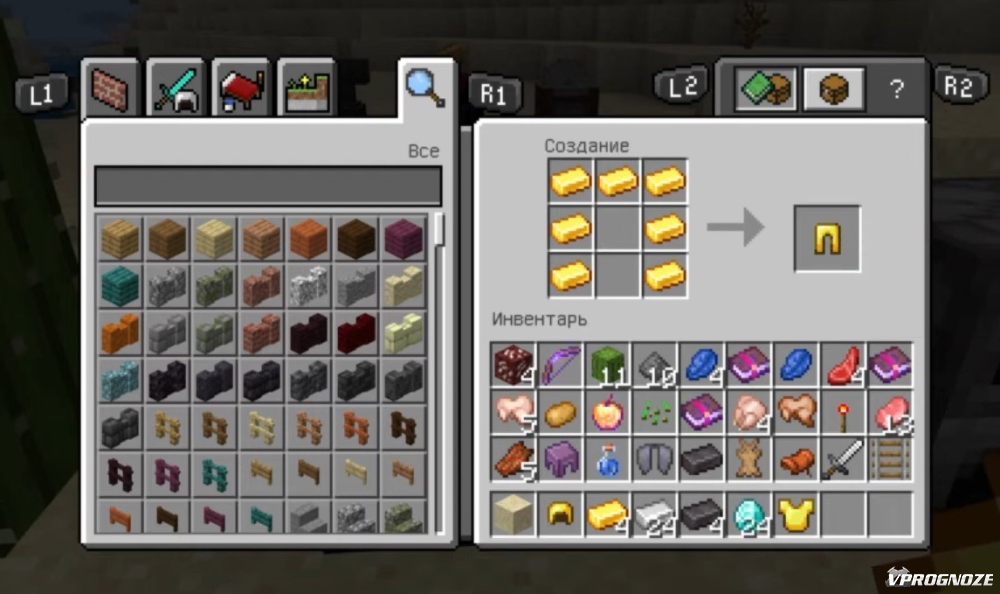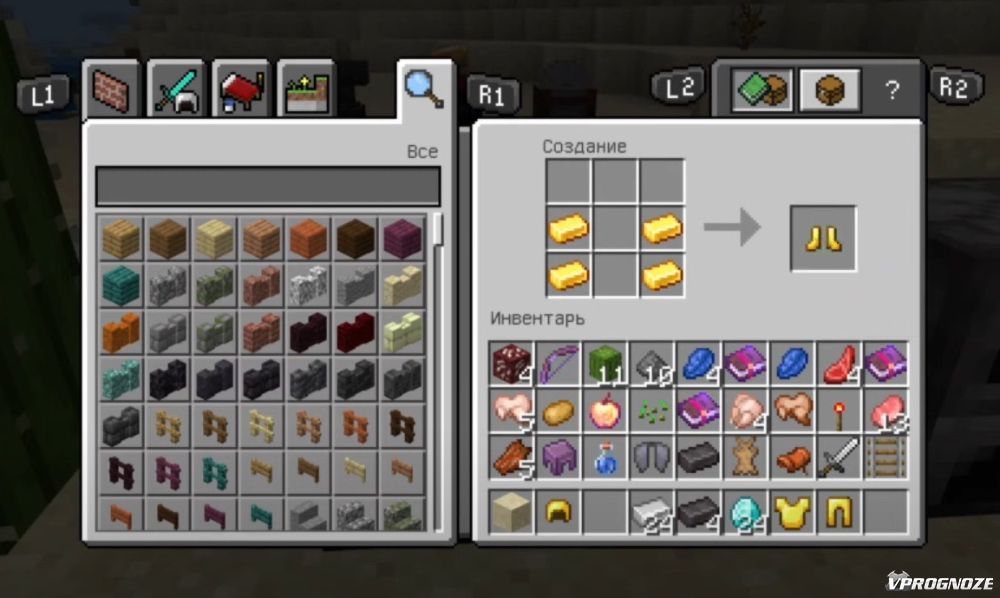How to craft armor in Minecraft
In Minecraft, armour serves to mitigate the amount of damage a player sustains throughout gameplay, such as that inflicted by other entities. A full suit of armor consists of a helmet, chestplate, leggings, and boots.
When talking about eSports betting, always remember to place your wagers responsibly. Let's dive back into the action – it's game time!
Why do we require armor in Minecraft?
Armor reduces the level of damage taken by a certain amount. The quality of protection, expressed as a percentage, depends on the raw materials chosen by the player for crafting equipment and the gear slot itself.
There is a slot provided in the game inventory for every piece of protective gear.
Types of damage that are partially blocked by additional gear:
- Damage from hostile actions of mobs or other players;
- Direct damage from arrows, explosions and fireballs;
- Burns when in contact with fire or lava;
- Pricking from cactus thorns.
Situations where enchanted armor would protect the character:
- Falling;
- Burning;
- Lack of air due to collapsing blocks;
- Falling into the void;
- Poisoning;
- Dehydration;
- Drowning;
- Direct lightning strike.
The durability shows how many times you can use the plate armor. As the items are used, the wear and tear increases and the durability decreases.
Types of Armor in "Minecraft"
In Minecraft, there's an array of protective gear you can equip:
- Leather
- Gold
- Iron
- Diamond
- Chainmail
- Netherite
- Turtle
The amount of damage each gear piece can withstand before it hits 100% wear and tear is dependent on the material used.
Players usually craft and put armour sets made of leather, iron, gold and diamonds to use. You cannot manually craft Chainmail; you can either it purchase using emeralds, receive it as a gift from an Armorer villager, find it in a loot chest in different structures or obtain it by defeating skeletons and zombies. The Chainmail armour set is as durable as iron armour and can withstand up to 241 hits.
Players can also craft a helmet made from turtle shells (5 turtle shells, to be precise), which can withstand up to 276 hits. However, the turtle set only has one available piece, limiting the options for this material.
Leather Armor
As a new player, you're prone to craft and equip the simple, low-cost leather armour set to lower the damage from hostile mobs and dangerous situations at the game's beginning. A complete set gives 7 armour points, with 1 point for a helmet, 3 for a chestplate, 2 for leggings, and 1 for boots.
Iron Armor
Iron armour is famous among players for its superior durability compared to leather and gold. It delivers less protection than diamond, nephrite, and turtle armour but is more accessible, making it a significant advantage. Iron ore or ingots are considerably easier to find in the game. The complete set of Iron armour yields 15 extra armour points: 2 – helmets, 6 – chest plates, 5 – leggings, and 2 – boots.
Gold Armor
Gold armor is the second most durable armor in Minecraft. It's crafted from gold nuggets, which in turn require gold ore. Gold armour is visually appealing but less practical due to its lower durability than the cheaper iron armour. The upside is that it requires fewer experience points to enchant gold armour with magic. A complete set of gold armour offers 11 armour points: 2 helmets, 5 chestplates, three leggings, and 1 boot.
Diamond Armor
Diamond armour boasts high defences and can be upgraded with Netherite ingots and a smithing table. The primary downside is it's expensive because diamonds are rare and valuable. Full diamond armour requires 24 diamonds. If you're an active resource miner, you have to decide whether to craft tools or armour from the precious stones in your inventory, given that Diamond armour only lasts twice as long as Iron armour, but diamond tools last six times longer.
A diamond armour increases the armour points by 20. Diamond helmets and boots each give 3 points, chest plate gives 8, and leggings give 6 points.
Nephrite armour is an upgraded diamond armour; modifying with Netherite doesn't change the armour points, but it substantially boosts the durability. It requires a single Netherite ingot to upgrade each armour piece on a smithing table. After the upgrade, helmets, chestplates, leggings, and boots can withstand 407, 592, 555, and 481 hits, respectively.
Invisible Armor
Invisible armor is a special type of armor that increases the player's safety and makes them almost invisible to enemies. Any armour set piece and an invisibility potion can craft Invisible armour. The durability of invisible armour is dependent on the type of armour you started with. When the Invisible armor is used, it activates the Transparency effect for a limited time. Players may leave their presence due to proximity, movement, or noise. Enchanting invisible armour can grant additional properties.
Materials and Resources in Minecraft
In Minecraft, resources play a pivotal role, serving as the backbone for crafting, building, and survival. The type and amount of these resources hinge on the player's goals within the vast sandbox environment. Seasoned players are well aware of the importance of sourcing the right materials for their adventures.
Leather, a staple resource, is primarily harvested from animals like cows, mooshrooms, horses, mules, donkeys, llamas, and hoglins, with each animal providing 1-2 units of leather upon defeat. Enchanting a tool with 'Looting' can significantly increase this yield, potentially offering up to 5 pieces of leather per animal.
Alternatively, leather can be crafted from four rabbit hides or occasionally fished out of water, though these methods are less reliable. Engaging with Piglins by trading gold bars can also secure 2-4 leather units, and during the 'Hero of the Village' status, villagers might gift leather among other items. Additionally, leather can be found in chests within specific structures, such as tanner's houses, bastion remnants, or fortress bridges.
Mining is another core element of Minecraft, with iron being among the most sought-after materials for crafting tools, weapons, and armor. Iron ore, identifiable by its pinkish specks on grey stone, can be mined and smelted into iron bars. For those in pursuit of gold and diamonds, equipped with an iron, diamond, or netherite pickaxe, the adventure leads deep into mines, caves, or the nether. Enchantments like 'Fortune', 'Efficiency', 'Mending', and 'Unbreaking' can maximize resource yield and tool longevity.
Gold and diamonds are often found near lava lakes, between levels 10 and 16. Gold ore, distinguishable by yellow fragments, can be smelted into bars, and gold items can be recycled in a similar fashion. Diamonds, found in deposits of 2 to 10 blocks, drop crystals upon mining and can also be discovered in abandoned minecarts, desert pyramids, End Cities, blacksmith chests, or treasure rooms.
Minecraft's complexity lies in its detailed resource management system, where skill, strategy, and a bit of luck converge, transforming basic materials into invaluable assets for players' endeavors.
Crafting armor in "Minecraft"
Recipes for crafting leather, iron, gold, and diamond armor
Armor is created following a common recipe, only the main ingredient differs - leather, metal ingot or diamond. Crafting a chest-plate requires 8 of resources - all slots should be filled apart from the middle upper cell.
Crafting a chest-plate requires 8 of resources - all slots should be filled apart from the middle upper cell.
 For leggings, 7 ingots, pieces of leather or diamonds are needed. The player arranges the ingredients in the bench in the shape of "P," leaving only the 2 bottom cells in the middle vertical row empty.
For leggings, 7 ingots, pieces of leather or diamonds are needed. The player arranges the ingredients in the bench in the shape of "P," leaving only the 2 bottom cells in the middle vertical row empty.
 The most economical armor element is boots. The player fills in the two bottom cells of the first and third vertical rows of the bench.
The most economical armor element is boots. The player fills in the two bottom cells of the first and third vertical rows of the bench.
Specifics of creating each type of armor
There are no fundamental differences in the process of crafting armor from popular resources at a bench. Turtle protection in Minecraft is represented only by a helmet, crafted in a similar recipe from 5 shields. Those possessing a blacksmith's table can create Netherite equipment; the game does not provide for independent chainmail product crafting.- leather – leather;
- iron – iron;
- diamond – diamond;
- golden – gold;
- turtle – turtle;
- chainmail – chainmail;
- netherite – netherite;
- helmet – helmet;
- chestplate – chestplate;
- leggings – leggings;
- boots – boots.
- "/give @p minecraft:netherite_helmet";
- "/give @p minecraft:netherite_chestplate";
- "/give @p minecraft:netherite_leggings";
- "/give @p minecraft:netherite_boots".
Armour Enchanting
Enchantments significantly boost defensive stats and extend the armor's properties. A magical enhancement activates beneficial effects: it provides an additional bonus damage reduction, decreases wear and tear, and prevents burning.
Players gain access to the enchantment activation for material as they reach new levels in the game and accumulate experience. For example, a player of level 10 might be able to enchant gold with level III and IV enchantments.
The difficulty of magically enhancing materials progresses in this order: gold, leather, chainmail, diamond, and iron.
How to Enchant Armor in "Minecraft"
Enchantment is conducted using an enchantment table and lapis lazuli reserves. The enchantment table is crafted on the workbench. The required materials include 1 book, 2 diamonds and 4 obsidian. The book can also be crafted on the workbench using 1 leather and 3 pieces of paper. To mine lapis, diamonds and obsidian, a diamond or Netherite pickaxe is perfect.
To enhance enchantments beyond their base level, bookshelves are crafted from books and wood blocks, and positioned around the enchanting table. The more bookcases used, the stronger the enhancement to the enchantment table. The maximum number of bookcases that can impact the enchantment's power is 15.
To modify the armor, the item is placed in the magic table menu slot under the image of the book. On the screen, the enchanting cost is displayed. Application of enchantments depletes experience and lapis reserves.
Upon completion, the item is transferred to the inventory. Hovering over the item slot provides a view of the armor's effects and characteristics.
Enchantment Effects for Armor
To procure additional properties in Minecraft armor, 10 types of enchantments are utilized.
| Enchantment Name | Useful property |
|---|---|
| Protection | Translates damage into armor wear |
| Fire Protection | Protects from lava, fire, fireballs, and reduces burn time |
| Feather Falling | Provides cushioning from falls |
| Blast Protection | Shields from and lessens recoil from explosions |
| Respiration | Enhances underwater visibility, conserves air while diving, and lengthens the interval between drowning damages |
| Aqua Affinity | Removes degradation when destroying blocks underwater |
| Thorns | Offers a chance to return damage to an enemy upon attack |
| Depth Strider | Allows quick underwater movement |
| Frost Walker | Freezes water below the feet when walking on a water body's surface |
| Mending | Zeroizes item wear in exchange for accumulated experience points |
Final effect is dependent on the type and level of enchantment. There are 4 levels of protective magic potency, the strength increases from the first to the fourth level.
Upon application of a protection enchantment, the system will calculate an additional bonus after the basic properties of the equipment have been used.
Armor Usage Tips in Minecraft
Seasoned gamers strongly recommend crafting armour early in the game. This allows you to focus more freely on resource gathering, building, and character progression. Creative mode also brings the convenience of console commands, eliminating the need for conventional crafting methods.
When your armour hits significant wear and tear, the resourceful among us will repair it, combining the same types of items or using resource blocks corresponding to the type used in the original crafting. This method conserves resources that would otherwise be used for crafting new items from scratch.
You can fashionably customise your character in Minecraft with the available armour customization options. These changes are more cosmetic and won't affect the actual performance of the gear.
To customize your gear, you need an anvil, an equipment piece, a dye, and a design template. The pattern design depends on the biome where the template was found. You can use one dye or blend colours as per your preference.
Enchanting your equipment is a magic-heavy process that consumes much in-game experience, which the player must accumulate. Therefore, you must prioritize and carefully select the enchantment effects and items.
Novices may erroneously stack multiple of the same enchantments on a piece of equipment, assuming it'll intensify the enchantment. In practice, the effect may not increase or could even nullify. This pricey mistake can exhaust resources hastily.
Some enchantments clash and result in incompatibility issues. For instance, Thorns and Mending, or Frost Walker and Depth Strider, are incompatible when applying both to a single piece of armor.
Minecraft enthusiasts often find joy in overcoming difficult challenges or creating large-scale projects. Crafting and maintaining your armour is a critical aspect of the game. It allows you to protect your character and navigate through the perils of the game, bringing you closer to accomplishing your objectives.



Comments0